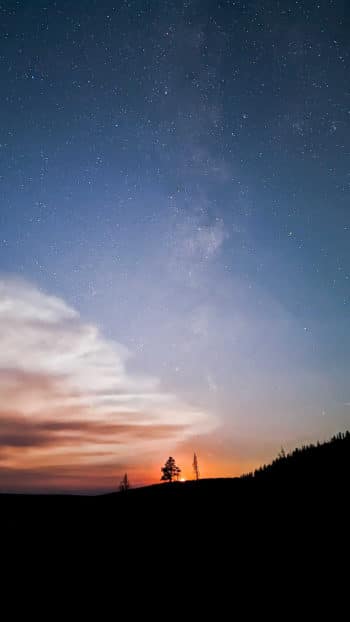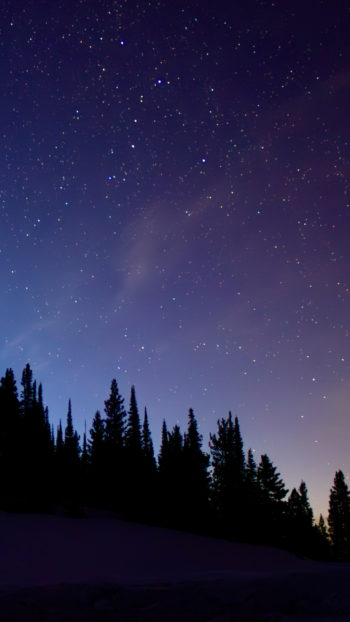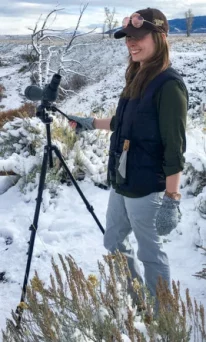Yellowstone National Park isn’t just a haven for wildlife and geysers—it’s also a paradise for night sky photographers. With its expansive dark skies free from city lights, the park provides a perfect canvas for capturing the Milky Way, shooting stars, and other celestial wonders. Whether you’re a beginner or an experienced astrophotographer, this guide will help you capture breathtaking images of the universe above Yellowstone.
Why Yellowstone is a Dream Destination for Astrophotography
Yellowstone is a dream destination for so many reasons: geothermal features, wildlife sightings, hiking, camping, and perhaps a lesser known delight, astrophotography. If you are an astrophotographer looking for the next exciting place, or a visitor to the park just wondering why Yellowstone is perfect for photographing the stars, here are some of the top reasons:
The Park’s Dark Skies & Low Light Pollution
Yellowstone is located far from major urban light pollution, making it an ideal place for stargazing. The park is working towards becoming officially recognized as an International Dark Sky Park, meaning the night skies are protected from excessive artificial lighting, providing clear, unobstructed views of the stars, planets, and other celestial phenomena. As one of the most remote parks in the United States, Yellowstone is far from city lights, offering some of the darkest skies in North America. This means that astrophotographers can capture the Milky Way, meteors, and other celestial objects with minimal interference from artificial light. Many sites in the park are classified as Bortle 1 on the Bortle Dark Sky Scale, meaning that they have the best possible night sky seeing.
Best Seasons for Capturing the Milky Way
The best times for capturing the Milky Way in Yellowstone are from late spring to early fall. Late spring (May to June) offers clear skies and earlier Milky Way visibility, while summer (July to August) provides long, warm nights with the galactic core of the Milky Way high in the sky. Fall (September to October) combines cooler temperatures, fewer crowds, and beautiful landscapes, making it an ideal season. Winter boasts longer nights and calmer skies for optimal seeing, but has colder temperatures and less visibility of the Milky Way. Overall, July through September offers the best combination of weather and location for great Milky Way views.
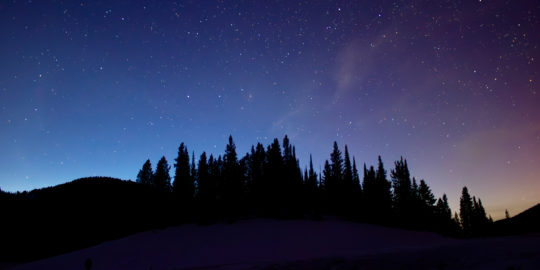
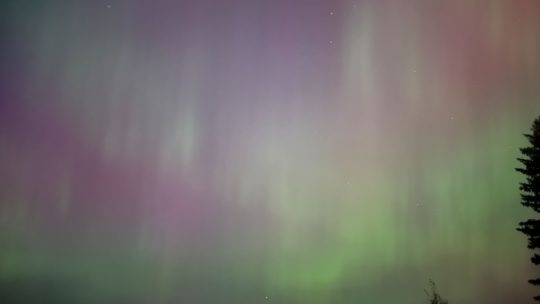
Essential Gear for Night Sky Photography
When capturing the night sky in Yellowstone, having the right gear is crucial for successful astrophotography. Here are some Yellowstone night photography tips for gear to bring:
Best Cameras & Lenses for Yellowstone Astrophotography
Full-frame sensor: Offers better light sensitivity and less noise in low-light conditions.
Wide aperture: An f/2.8 or wider aperture allows more light to reach the sensor, essential for capturing dim stars.
Wide focal length: Lenses in the 14mm to 24mm range are best for wide-field shots of the Milky Way and star trails.
Good high ISO performance: You’ll want a camera that can handle high ISO settings without producing too much noise.
Sharpness across the frame: Look for lenses with minimal distortion or chromatic aberration for the clearest, sharpest shots of the night sky.
Using a Tripod for Long-Exposure Shots
In Astrophotography, using a tripod for long exposure shots is essential for capturing clear, detailed images of the night sky. This is especially true when shooting celestial objects like the Milky Way, capturing star trails, or imaging the moon. Choosing the right tripod can be challenging with so many options, but here are some things to consider:
- Stability: A sturdy, stable tripod is key to avoid camera shake, especially during long exposures. Lightweight tripods might be convenient but can be prone to vibrations from wind or movement, so a solid, heavy tripod is ideal.
- Adjustability: Ensure your tripod can be adjusted to various heights and angles to help you frame your shots easily, especially when shooting across the sky.
- Material: Carbon fiber tripods are excellent for cold weather since they don’t get as cold as aluminum and are lightweight but stable.
Recommended Camera Settings for Night Sky Photos
For night sky photography, it’s essential to use Manual (M) mode to have full control over your settings. Set your aperture to f/2.8 or lower to allow maximum light capture, as this is key for capturing stars and details in the night sky. For ISO, use 1600 to 3200 for full-frame cameras, or 800 to 1600 for crop-sensor cameras, depending on your camera’s noise performance. Your shutter speed should be around 15 to 30 seconds, with the 500 Rule helping you determine the max exposure time without causing star trails (e.g., 500 ÷ focal length = max exposure time). Always use manual focus as autofocus won’t work well in low light, focusing on a distant light or star for sharpness. Set your white balance to Daylight (5000K) or adjust manually for warmer or cooler tones, and shoot in RAW to preserve more image data for post-processing adjustments.
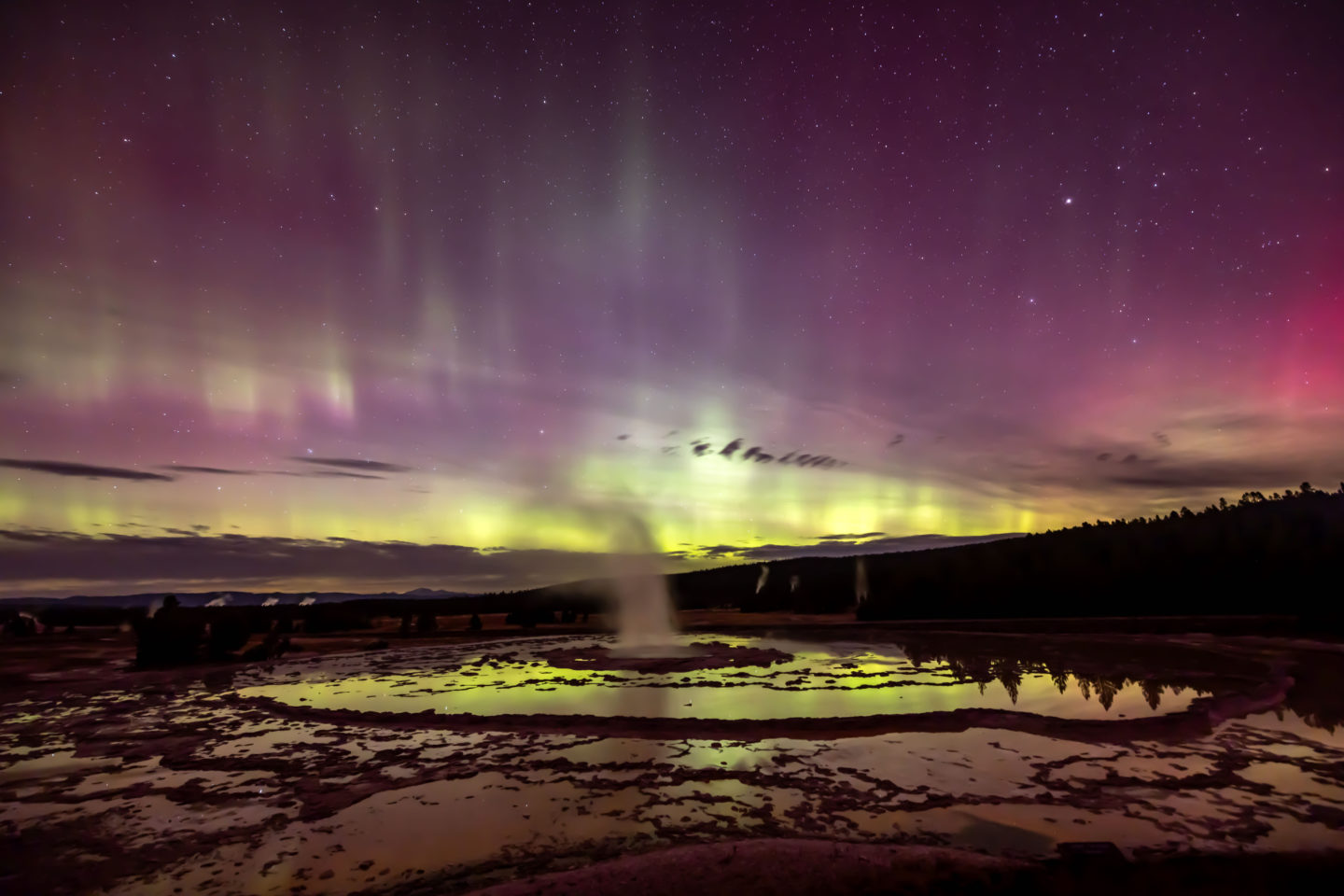
Top Locations for Night Photography in Yellowstone
With 2.2 million acres to explore within the boundaries of the park, it’s essential to plan ahead and figure out where the best stargazing spots in Yellowstone are before setting out. Here is a breakdown of some of the best locations for night sky photography in Yellowstone:
Yellowstone Lake – Reflections of the Stars
Yellowstone Lake provides some of the most picturesque views in the park, especially at night when the stars reflect on the water’s surface. The lake’s serene environment offers a peaceful setting for capturing long exposures or star trails over the calm waters.
Lamar Valley – Wildlife & the Cosmos
Known for its wildlife and stunning landscapes, Lamar Valley also provides incredible views of the night sky with minimal light pollution. It’s perfect for Milky Way photography, achieving wide-angled shots stretching over the valley’s rolling hills and dramatic scenery, and generally fantastic for capturing Yellowstone dark sky images.
Old Faithful – Geysers Under the Galaxy
While the Old Faithful area is popular for daytime visits, it’s also great for astrophotography after dark. With the geyser’s dramatic eruptions and the nearby Upper Geyser Basin, you can frame the Milky Way or star trails against the steaming geothermal features for a truly unique shot.
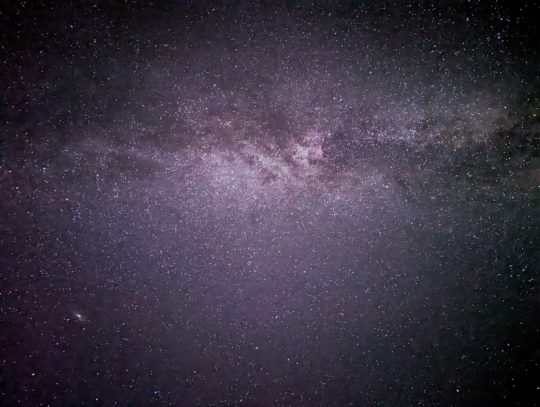

Expert Tips for Capturing the Best Shots
Whether you’re a beginner or an experienced photographer, capturing stunning images of the night sky requires the right techniques, gear, and locations. But there are more specific astrophotography tips from experts to help you make the most of your sessions, ensuring you capture breathtaking shots of the stars.
How to Reduce Light Pollution in Your Photos
To reduce light pollution in astrophotography, shoot in remote areas away from city lights, using light pollution maps to find dark spots with a low Bortle value. Use wide-aperture lenses (f/2.8 or wider) and shoot at optimal times, like late at night. Enable Long Exposure Noise Reduction (LENR) on your camera, and in post-processing, use software like Lightroom to reduce noise and remove color casts. Light pollution filters can help block artificial light, and stacking multiple exposures can further enhance your images. Additionally, avoid glare with lens hoods and filters to capture clearer, more vibrant shots of the night sky.
Best Apps for Tracking Stars & Planets
SkySafari offers a comprehensive star map with over 25 million stars and planets. You can track celestial objects in real-time, access detailed information about each one, and use its telescope control feature for compatible devices. Stellarium provides an immersive 3D star map, showing over 1 million stars, planets, and deep-sky objects. It offers real-time simulation of the night sky and allows you to easily plan your stargazing sessions. Star Walk 2 is a user-friendly app that lets you track stars, planets, and constellations in real-time by pointing your phone at the sky. It also offers interactive features like time-lapse and celestial event notifications.
Editing Your Night Sky Photos for Maximum Impact
Start by using RAW files for flexibility, adjusting exposure and contrast to bring out details without overexposing the stars. Reduce noise and sharpen the image to make the stars pop, and correct colors to remove unwanted tints. If light pollution is present, use gradient filters or color adjustments to minimize it. For multiple exposures, stacking images can reduce noise and improve detail. Finally, enhance the foreground with dodge and burn techniques, and make final tweaks to brightness, vibrance, and saturation for a polished, striking result.
If astrophotography interests you at any level from novice to expert, pack your camera! A visit to this park opens up the most spectacular stage for night sky photography, and what better place to experience shooting stars than Yellowstone? Photograph ethereal geothermal wonders and wildlife by day, and stellar celestial sights at night and immerse yourself in a place that’s out of this world.
FAQs
What camera settings should I use for night photography?
Use a wide aperture (f/2.8 or lower), high ISO (1600-3200), and a long exposure time (15-30 seconds).
Do I need a special camera for astrophotography in Yellowstone?
While a DSLR or mirrorless camera is best, even smartphones with night modes can capture stunning shots.
Are there specific locations in Yellowstone that are best for night photography?
Yes! Yellowstone Lake, Lamar Valley, and Mammoth Hot Springs offer incredible night sky views.
How can I avoid light pollution in my shots?
Choose remote areas away from lodges and use a red flashlight to preserve night vision.
Can I photograph the Northern Lights in Yellowstone?
Yes, though rare, the aurora borealis is sometimes visible, especially in the winter months.
Are there any photography workshops or tours in Yellowstone?
Yes! Our guided stargazing and photography tours provide expert instruction and access to the best locations.


